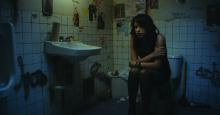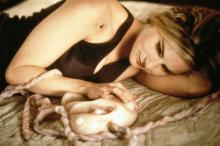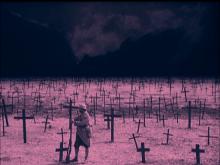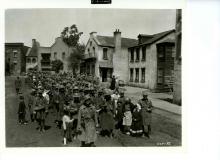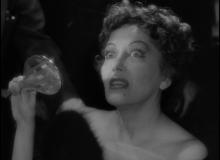By Jim Healy, UW Cinematheque Director of Programming
During this season of giving, please take a moment to consider how the UW Cinematheque has enhanced our cinematic culture in 2014.
This year, the Cinematheque has presented nearly 150 screenings and programs, all for free, in our regular venues at 4070 Vilas Hall, the Chazen Museum of Art, and the Marquee Theater at Union South. Our selections have included series of films devoted to directors like Alfred Hitchcock, Claire Denis, Jacques Demy, Richard Fleischer, William Friedkin and David Cronenberg. Our other series included a salute to actor Alec Guinness, in honor of his centennial; plus, New Chilean Cinema, Rare Film Noir, New Restorations from the Academy Film Archive, Horror Classics for Halloween and WWI movies. Plus, we welcomed filmmaker Guy Maddin in person and brought you the only area theatrical screenings of such acclaimed new movies as the Oscar nominated documentary Cutie and the Boxer, Juliette Binoche in Camille Claudel 1915, Lars von Trier's epic Nymphomaniac, Jesse Eisenberg in The Double and Kelly Reichardt's Night Moves, Desiree Akhavan's Appropriate Behavior and, still coming up on December 5, the final film of Alain Resnais, Life of Riley.
In August of 2014, DCP (Digital Cinema Package) was added to the list of formats that can currently be shown in the UW Cinematheque's main venue, at 4070 Vilas Hall. As we prepare for our January-May 2015 programming season, our projection booth is being upgraded so that 4K DCP, currently the highest standard of digital exhibition, can be screened. Upcoming 4K screenings will include canonized titles such as The Lady from Shanghai by Orson Welles (whose centennial we will celebrate with screenings throughout 2015), Roberto Rossellini's Viaggio in Italia and The Beatles' first movie, A Hard Day's Night. Meanwhile, we've done more than our part in keeping 35mm projection alive with screenings of dozens of films in the original format throughout the year, including our upcoming December 7 screening of Hitchcock's Spellbound and our December 12 show of Minnelli's Meet Me in St. Louis.
Additionally, our auditorium at 4070 Vilas will be given a rejuvenating boost with new seats and carpeting, all improvements that make our venue an ideal place to watch a movie.
Our next improvement project will bring digital 3D projection capabilities to the UW Madison campus. In November of 2014, the Cinematheque held an off-site benefit 3D screening of Jean-Luc Godard's Goodbye to Language, which raised nearly 25% of the funds needed to give 3D a permanent home at the Cinematheque.
Whether DCP or 35mm, 2K or 4K, 3D or 2D, the Cinematheque screenings will continue to be free and open to the public, but we still rely on donations from our audiences to keep our technical facilities up-to-date. Please help us in providing the Cinematheque with the most state-of-the-art, most versatile exhibition equipment in the region by making a donation today to the Cinematheque's Friends of Film fund here.
While we plan for the future, the Cinematheque continues to provide you with a bounty of cinematic treasures at our three regular venues. In addition to the above-mentioned Orson Welles salute, our January-May calendar includes another centennial tribute, this time to maestro of Italian comedy Mario Monicelli. Plus, more important premieres, Polish masterpieces, new Argentine cinema, the schlocky and the sublime from Cannon Films, and in-person visits from Cineteca di Bologna's Guy Borlee and acclaimed screenwriter/director (and Pewaukee native) David Koepp.
See you at the Cinematheque!



